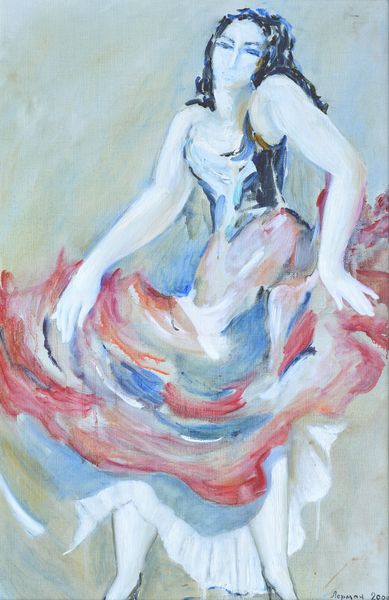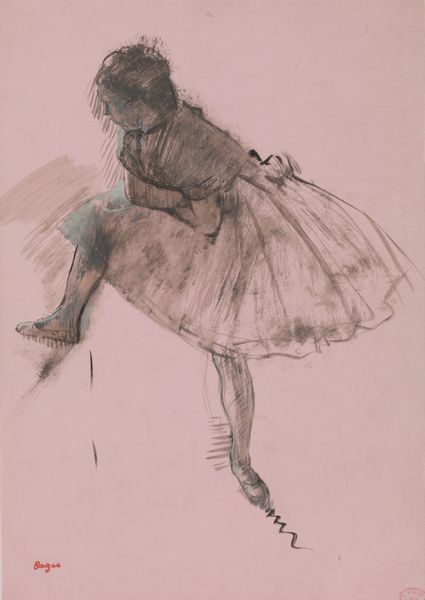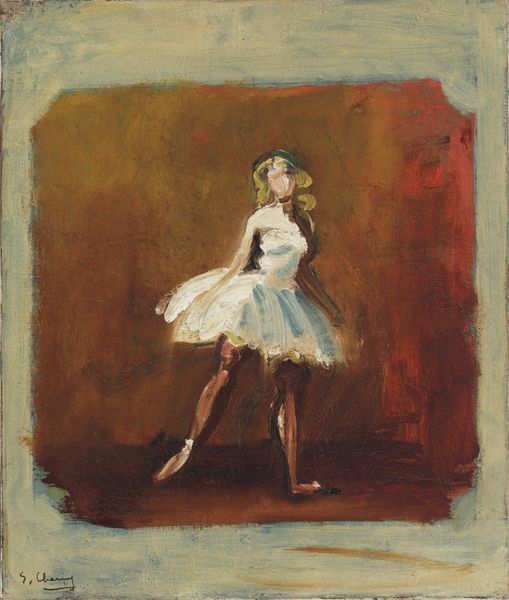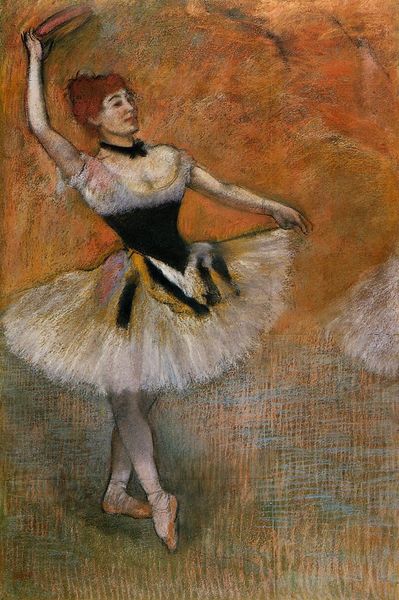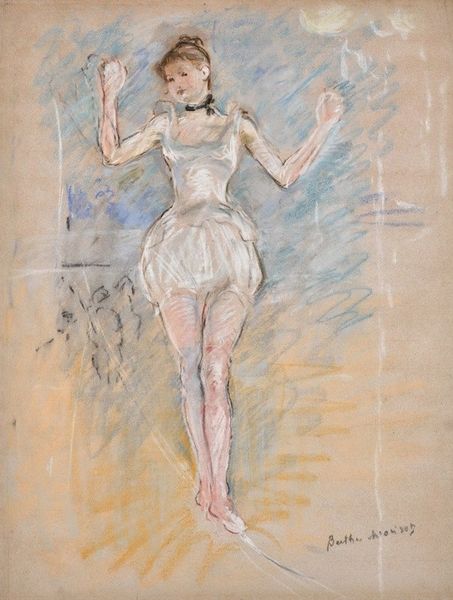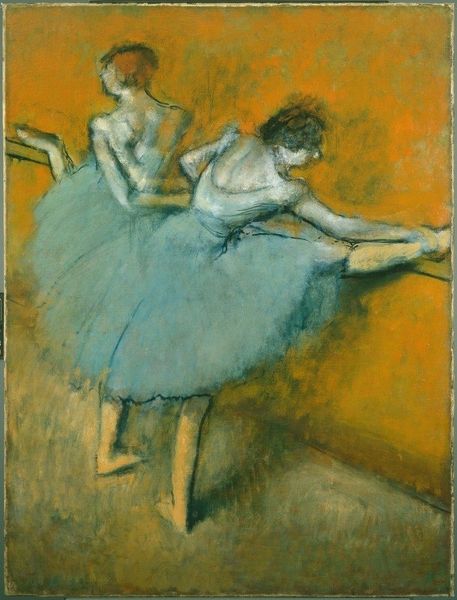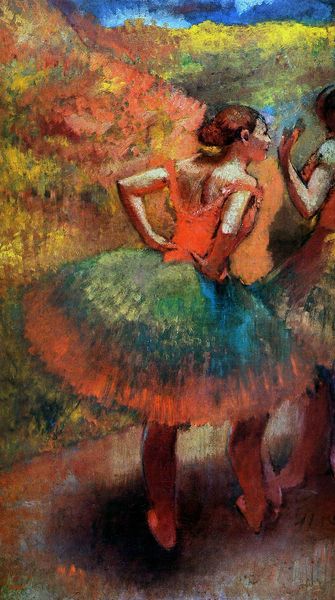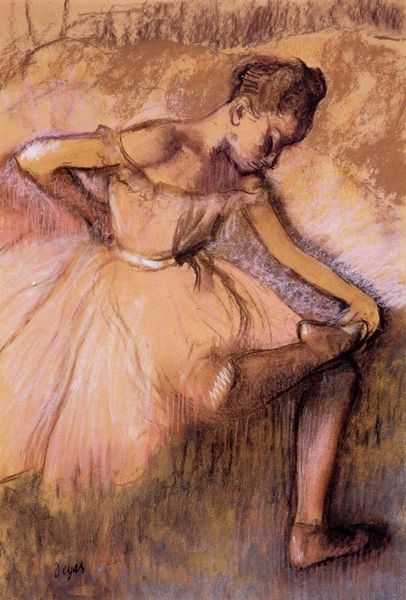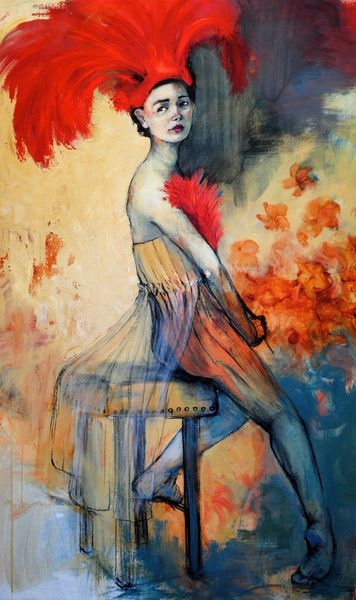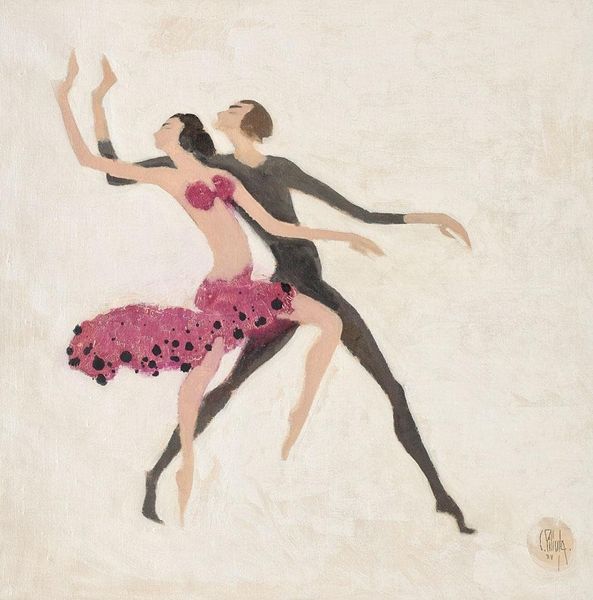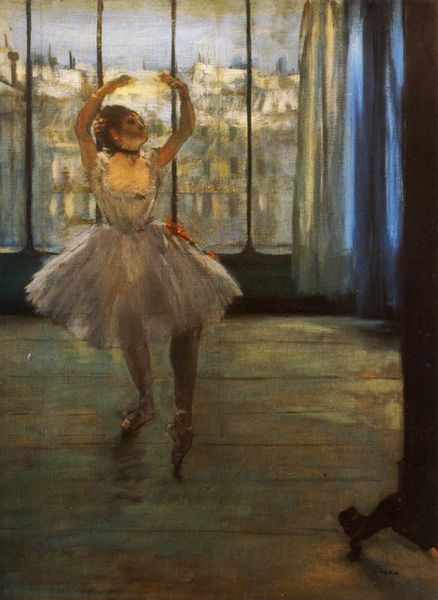
painting, watercolor
#
portrait
#
painting
#
landscape
#
figuration
#
oil painting
#
watercolor
#
genre-painting
Copyright: Zoe Lerman,Fair Use
Curator: Looking at this watercolor on paper from 1963, we see "Ballerina O. Potapova," rendered by Zoe Lerman. What strikes you first about this portrayal? Editor: Immediately, it's the tension, that elegant reach upward contrasted by the shadowed, almost gothic backdrop. The dancer is powerful, yet somehow vulnerable in this dimly lit space. Curator: That vulnerability resonates. Ballerinas, especially in the Soviet era, were heavily controlled figures, symbolic of both national pride and the suppression of individual expression under a state apparatus. Lerman captures that duality. Editor: Precisely! And what’s remarkable is that the dark paint around her and the gray shading create such drama that echoes those sociopolitical expectations and personal sacrifices for their art, particularly within a gendered context. Ballet becomes a loaded signifier. Curator: Yes, we see here the convergence of personal artistic expression with a specific state agenda. But I’m also intrigued by the economy of line—the quick brushstrokes giving form to this dancer's figure. Lerman doesn't present the typical idealized ballerina. Editor: True. It steers clear of romanticized notions of feminine grace and navigates complexities of female performers and societal roles. She stands within history. There’s something so poignant and stark about the visual economy here. Curator: What’s interesting, though, is to also situate this against the backdrop of mid-century figurative art trends. How Lerman’s engagement pushes the boundaries of state-sanctioned portraiture to encompass broader artistic movements is particularly meaningful in light of the pervasive controls that characterized this time. Editor: It's clear how much depth exists. This artwork isn't simply a portrayal of ballet; it holds much more significant contextual weight. It presents itself as more profound. Curator: Definitely. Looking at the era, it’s evident this piece resonates on so many historical levels. Editor: It certainly adds another layer of understanding, and encourages a critical engagement with beauty in a restrictive environment.
Comments
No comments
Be the first to comment and join the conversation on the ultimate creative platform.
